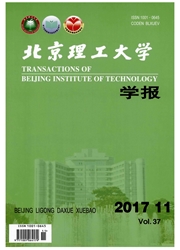

 中文摘要:
中文摘要:
为深入了解湍流模型对超空化流动计算的影响,分别采用3种不同的湍流模型即标准κ-ε模型、RNGκ-ε模型和SSG雷诺应力模型,对绕水翼的超空化流动进行了数值模拟,并与实验结果进行了对比.结果表明:标准κ-ε模型仅能模拟出定常状态的超空化形态;RNGκ-ε模型和SSG雷诺应力模型能较为准确地模拟出超空化区域内的两相混合非定常特性,并完整再现了空泡内部两相(气相和水气混合相)界面的反向波动过程,而采用RNGκ-ε模型计算得到的最大空泡长度与实验最为接近.
 英文摘要:
英文摘要:
Supercavitating flows around a hydrofoil is simulated to grasp the unsteady behaviour numerically. To evaluate the application of turbulence models in the computations of supercavitating flows, three different models are implemented: standard κ-ε model, RNGκ-ε model and SSG Reynolds stress model. And then, numerical results were compared to experimental ones. The results showed that the standard κ-ε model can only simulate the steady supercavitating behavior. However, both the RNG κ-ε model and SSG Reynolds stress model can obtain two-phase mixture characteristics in the cavity area, especially the reverse fluctuating processes of the interface between the vapor phase and water-vapor mixture phase. It is also noted that the maximum cavity length simulated by the RNG κ-ε model agrees well with the experimental one.
 同期刊论文项目
同期刊论文项目
 同项目期刊论文
同项目期刊论文
 期刊信息
期刊信息
